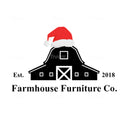Choosing Your Wood Species
Hardwood Species
Hardwood furniture is getting harder and harder to find as most pieces you'll find at your local big box store is made cheaply over seas using MDF with veneer or the more sly "enigeered hardwood" material being used that looks like hardwood.
Below is a list of our hardwoods that we use and is listed from least expensive to most expensive. When customizing your dining table, you can select a wood species that fits within your budget based off of the information below.
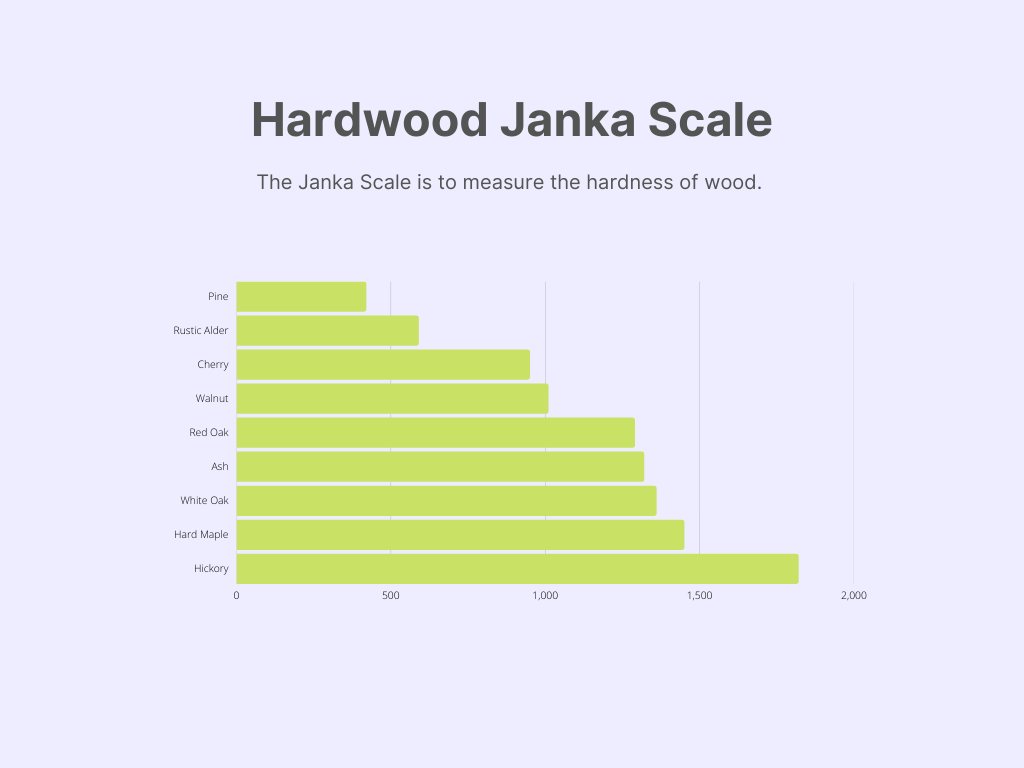
The Janka Test is a measure of the hardness of wood. The Janka Test was developed as a variation of the Brinell hardness test. The test measures the force required to push a steel ball with a diameter of 11.28 millimeters (0.444 inches) into the wood to a depth of half the ball’s diameter. The diameter was chosen to produce a circle with an area of 100 square millimeters. The higher the Janka Scale the harder the wood species.
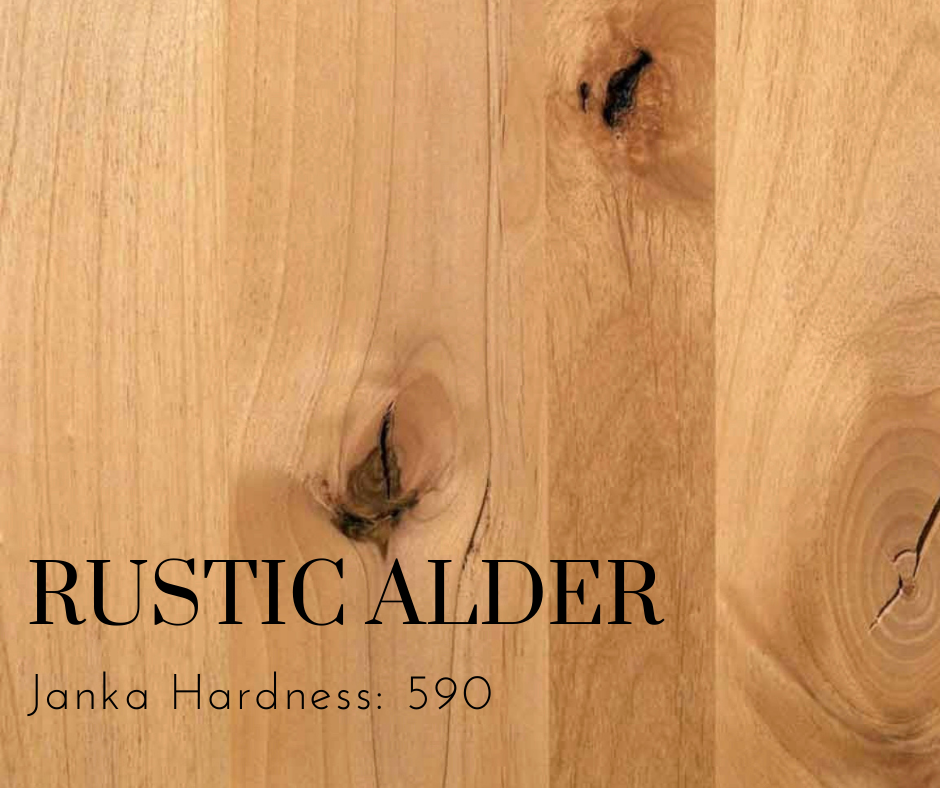
Rustic Alder
Knotty alder wood is used to describe alder boards that have numerous visible knots. Not all alder wood boards have knots, but this is a selection favorite of carpenters trying to create a rustic aesthetic. Alder wood is a popular choice for furniture because it is strong and affordable, but making the choice to use knotty alder can be used to complete a farmhouse or ranch style. If it is not your intention to create one of those types of styles, then knotty alder should be avoided.
During the finishing process we fill the large knots/voids with an apoxy to create a smooth surface. Please note that not all cracks and small can be filled. To be clear on the expectation, if you are purchasing this wood species that this will be a more rustic look

Ash
Ash wood is not only used in furniture but most notably,for its use in baseball bats. Ash wood is grown throughout North American. The Ash wood grown in the northern part of this region is known for producing the firmest lumber for this species of wood. In the South, Ash is typically softer because of higher sap content. Overall, Ash is known for being moderately hard, heavy and strong. Ash wood from the northern regions of North America tends to have a browner coloring due to its higher content ratio of heartwood in the lumber. Frequently, Ash is used as a substitute for Red Oak.
Ash is not only great for it's durability, but it is also a blank canvas. White is white undertone, you can literally use any stain your heart desires.
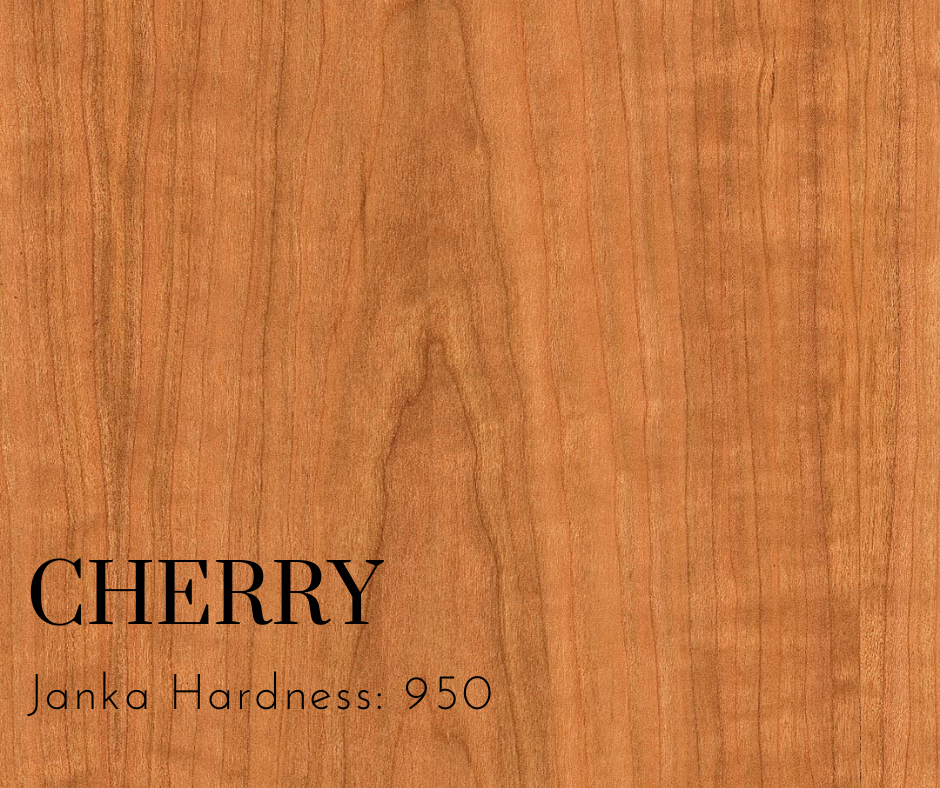
Cherry
Cherry wood comes from the cherry fruit tree. It is a hardwood, and it is famed for its durability and beautiful color.
Cherry wood comes in a variety of colors, including yellow, white, red and dark brown. The darker heartwood adds a touch of elegance to its surroundings, while lighter versions are perfect for furniture. It is extremely heavy and durable, which is one reason that colonial carpenters used it for cabinets and furniture. Cherry wood has a smooth, satiny grain that can be enhanced with the application of stain. It does contract and expand slightly as the humidity of its locations changes. Cherry wood is highly prized by woodworkers because of its rich color, smooth grain and flexibility. Cherry wood costs less than many other hardwoods, which makes it even more attractive for carpenters and woodworkers. If you are a fan of this wood species and like the natural characterists, then using a tung oil finish is best, however it can be stained to change it color. Please note that this will have a red undertone to any stain or finish.

Red Oak
Oak wood is prized for its strength, uniformity and beautiful grain.
Oak wood has been cut from an oak tree and is classified as a hardwood. There are over 600 species of oak, but red oak and white oak are considered to be the most suitable for woodworking projects. Its strength and beauty makes it ideal for cabinets, furniture and flooring materials. The color of oak wood depends on the species of tree from which it was cut. White oak has a color that ranges from grey to brown. Red oak ranges from a dark pink to brown. Its open pores allow oak wood to accept stain readily, which can bring out the unique color variations within a single piece of wood.
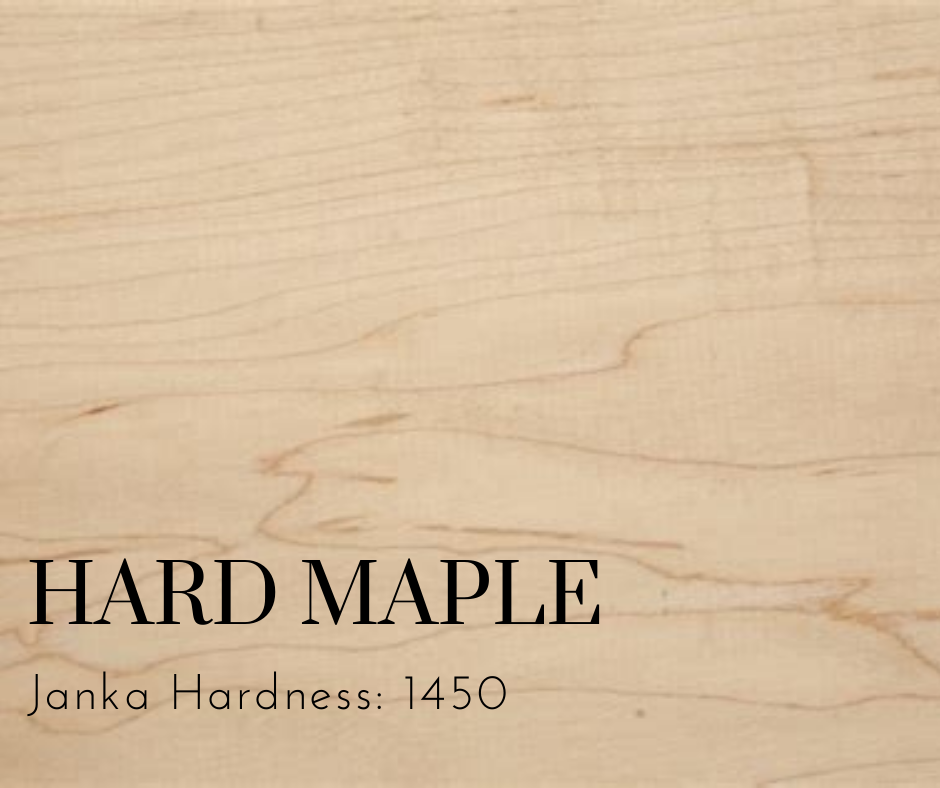
Hard Maple
Northwest’s Hard Maple is grown in both the Glacial and Appalachian regions.
Unlike other hardwoods, the sapwood of Hard Maple is used rather than the heartwood. Admired for its beautiful cream color fine texture, the grain is generally straight but also occurs as “birds-eye,” “curly,” and “fiddleback” grain. Hard Maple’s beauty and strength makes it a favorite for flooring, cabinetry, and furniture.
Hard Maple tends to stain much, much lighter than any other wood species. This is due to the fact that the wood grain is tight that its pores to not accept as much stain as other wood species that we offer.
Before ordering Hard Maple, we highly recommend ordering some stain samples.

Hickory
One of the strongest, hardest and most-dense of our Glacial hardwoods, Hickory is used for applications that require sheer strength and high shock resistance. This wood is great for countertops and table tops that we get alot of abuse. The sapwood of hickory is white, tinged with brown, while the heartwood is pale to reddish brown. Hickory has coarse texture and usually straight grain, but can be wavy or irregular. Hickory is a traditional choice for cabinetry and furniture with lots of character.
Depending on the style you are going for, Hickory looks great in its natural appearance, so a tung oil would be a great option for this look. It also stains very nicely. A darker stain makes it look very elegant and high end.

Walnut
Northwest’s Walnut is grown in both the Glacial and Appalachian regions.
American Walnut is one of the scarcest and most coveted native hardwoods. It is in a class by itself. The sapwood of Walnut is nearly white, while the heartwood is light brown to dark, chocolate brown, often with a purplish cast and darker streaks. Northwest Walnut is steamed to enhance the chocolate brown heartwood and darken the sapwood. The wood is heavy, hard and stiff and with a high shock resistance. It is generally coarse textured and produces distinctive grain patterns.
Since being discovered in during World War I to be used for gunstocks, it has been one of the most highly saught after wood species to fine furniture and cabinetry. This wood species is a show stopper and will make any piece of furniture a marvel for guests and an aboslute heirloom.
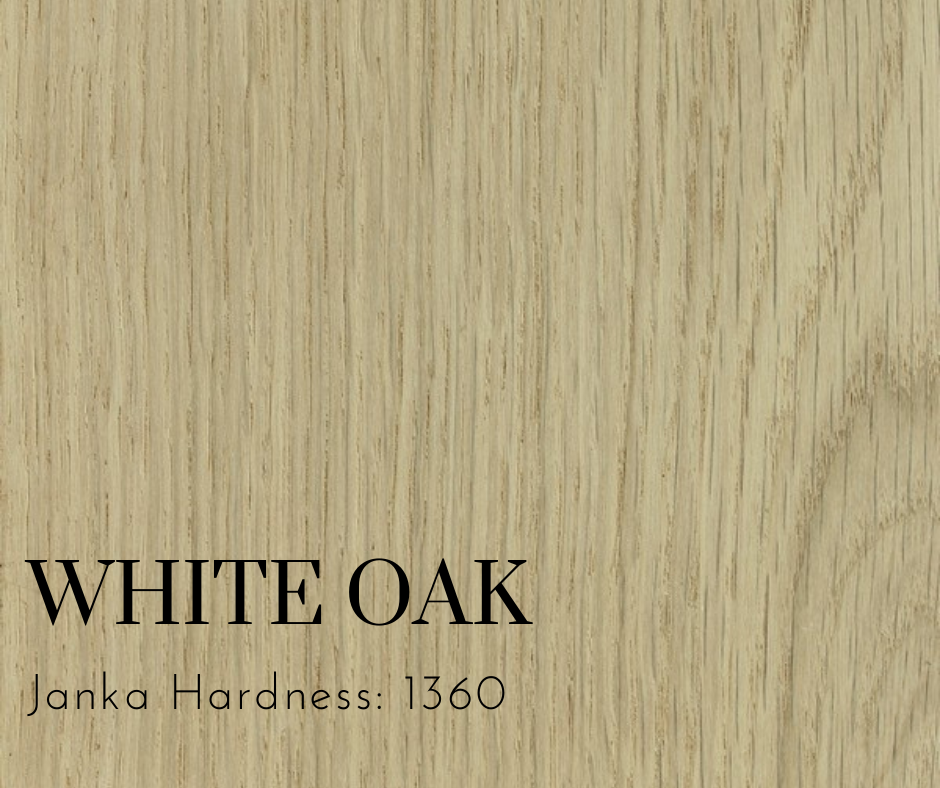
White Oak
White Oak is grown in both the Glacial and Appalachian regions.
Strong, economical and rot-resistant, White Oak is very valuable to makers as an important source of wood for furniture and flooring. The sapwood of White Oak is white to very light brown, while the heartwood is light to dark brown. It has more figure than red oak, with a distinctive open grain and coarse texture. Fast-grown oak, with wide rings, is stronger and heavier than slow-grown oak.
White oak is most noteably used here in Kentucky for bourbon barrels.
With its tanish brown appearance, we recommend keeping this wood as natural as possible. Tung Oil or a Pickled Oak stain looks best on White Oak. If you plan of staining white oak, we think it would be best to go with red oak. Once you stain white oak, you can really not tell a difference between the red oak and white oak.
